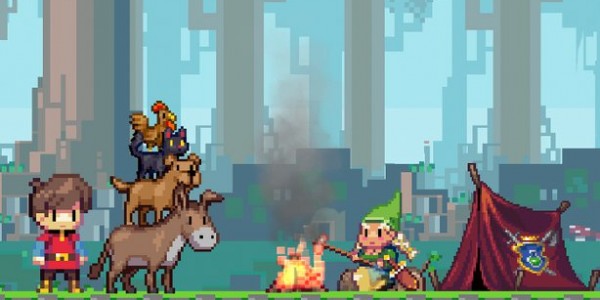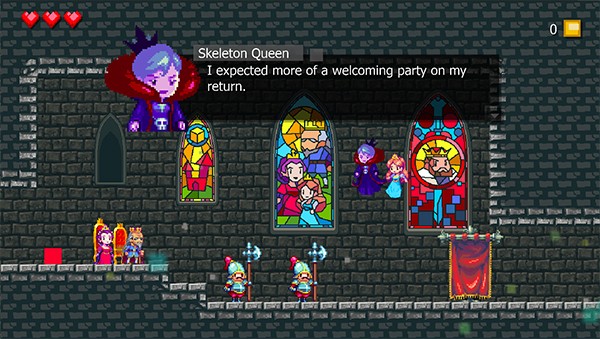It’s nice to know that it’s still possible to be surprised by small games from independent developers. The Adventures of Pip presents fresh mechanical ideas in a lighthearted and tactily satisfying package. Despite the game leaning heavily throughout its length on what is introduced early on, sitting down time and time again with its nostalgic stylings makes for a joyful experience that is worth the time spent.
The Adventures of Pip is a two-dimensional platformer, with tight, responsive controls — a modern design that hearkens back to the time of the NES and SNES, much like the acclaimed Shovel Knight. While the experience may not be as superlative as that gem of a game, Pip continues on this welcome trend with an appreciable degree of success.
The game’s defining mechanic is titular hero Pip’s transformation between his three forms: a single pixel, an 8-bit sprite, and his 16-bit rendering, complete with a broadsword. Each of these three forms afford him specific abilities that open up pathways inaccessible to the other two, so players will find themselves switching back and forth in order to progress through the game’s 45 levels.
This constant transition feels seamless, intuitive and well-integrated into the natural course of play. A button on the controller is mapped to automatically reducing Pip from 16-bit to 8-bit, and then from 8-bit to single pixel. The reverse is accomplished by defeating a specific type of enemy and absorbing its pixels. These critters are liberally dispersed throughout each stage and positioned exactly where a more evolved Pip would be necessary to proceed. They also respawn a few seconds after being destroyed. It’s all a very convenient process, and much appreciated.
The best moments in The Adventures of Pip are its long strings of rapid evolution and de-evolution through a variety of obstacles, particularly when they culminate with reaching the level’s end. It’s sequences like this that keep a player engaged and ready to explore the next level, despite some parts of the game feeling repetitive, playing on the same level design philosophies slightly too often.
Other aspects of adventuring with Pip, like accruing pixel currency and rescuing lost villagers hidden in each level like the Yoshi coins of Super Mario World, provide collect-o-tainment and the opportunity for improvement via the item, weapon, and upgrade shops in town, though these aren’t the game’s main attractions. It’s the moment-to-moment play that makes Pip enjoyable.
Like those platformers of yesteryear, The Adventures of Pip is perfectly suited to intermittent play sessions over long periods of time as opposed to marathon consumption. Having experienced the game in this manner, impressions are certainly positive, though I don’t expect the game to stand among the year’s finest, nor go down in gaming history as a landmark title.
The Adventures of Pip is unique and fun, and strikes a nostalgic chord without sacrificing its originality. It’s not perfect, but it’s worth playing, down to the last pixel.



















